『Historical Evolution』 In 1949, during the march of the Chinese People's Liberation Army to liberate Xinjiang, Wang Zhen, commander of the First Corps, instructed to establish the First Corps Health School of the Chinese People's Liberation Army (developed into Shihezi Medical College in 1978), which became the predecessor of Shihezi University. In 1958, the Corps Party Committee founded the Corps Agricultural College (renamed Shihezi Agricultural College in 1979), founded the Corps Accounting Training Team in 1959 (developed into Corps Economic College in 1987), and founded the Corps Normal College in 1960 (Corps Education College in 1983). In 1996, Shihezi Medical College, Shihezi Agricultural College, Corps Economic College and Corps Normal College merged to form Shihezi University. In 2000, it was selected as a key university for the development of the western region of the country. In 2004, it was selected as a provincial and ministerial co-construction university. In 2008, it was selected as a key university for the national "211 Project". In 2012, it was selected as a university in the "Basic Capacity Building Project for Colleges and Universities in Central and Western China" and a university in the "Comprehensive Strength Improvement Project for Colleges and Universities in Central and Western China" (one province, one school). In 2017, it was selected as a national "Double First-Class" (first-class discipline) construction university. In 2018, it became a "Ministry-Provincial Joint Construction" university of the Ministry of Education and the Xinjiang Production and Construction Corps. In 2022, it was selected as a new round of national "Double First-Class" construction university. "School Positioning and Goals" The school fully and accurately implements the Party's Xinjiang governance strategy in the new era, firmly grasps the overall goal of social stability and long-term peace, and always adheres to the school positioning of "based in the Corps, serving Xinjiang, facing the whole country, and radiating Central Asia" and the school philosophy of "serving as the purpose and developing in contribution", forming the school characteristics of "educating people with the spirit of the Corps and serving for maintaining stability and guarding the border", and becoming an important force in education and guarding the border, strengthening the border with science and technology, and consolidating the border with culture. At present, Shihezi University is moving towards the goal of building a first-class, internationally renowned, distinctive and high-level university in the west. 『School Honor』 In 2000, the National Advanced Collective for Graduate Employment of General Colleges and Universities. In 2009, the first batch of 50 colleges and universities with typical experience in graduate employment. In 2010, the National Advanced Collective for Graduate Pre-recruitment of General Colleges and Universities. In 2017, the first batch of national demonstration colleges and universities for deepening innovation and entrepreneurship education reform, and the third batch of "National College Practice Education Innovation and Entrepreneurship Base". In 2019, the cultivation and creation unit of "National Party Building Work Demonstration College". In 2020, the National Civilized Campus. In 2021, the National Model Unit for Ethnic Unity and Progress, and the first batch of national college graduate employment ability training bases. In 2022, "National Party Building Work Demonstration College". 『Organization Settings』 The school currently has 20 party and government institutions, 2 mass organizations, 23 teaching institutions, 10 teaching auxiliary institutions, 4 scientific research institutions, and 5 affiliated units. 『Discipline and Major Settings』 The school currently has 11 major disciplines: economics, law, education, literature, history, science, engineering, agriculture, medicine, management, and art. The school has 100 undergraduate majors (about 90 enrollment majors) (28 national first-class professional construction sites, 20 provincial first-class professional construction sites), 9 first-level doctoral degree authorization sites (applied economics, biology, mechanical engineering, chemical engineering and technology, agricultural engineering, crop science, horticulture, animal husbandry, business administration), 1 professional degree doctoral authorization site (civil engineering and water conservancy), 30 first-level discipline master's degree authorization sites, 31 professional degree master's authorization sites. 4 postdoctoral research mobile stations, 2 postdoctoral research workstations. There is currently 1 national first-class construction discipline (chemical engineering and technology), 1 national key discipline (crop cultivation and tillage), and 2 ministry-provincial joint disciplines (chemical engineering and technology, agricultural engineering). Seven disciplines, including clinical medicine, agricultural science, chemistry, plant and animal science, engineering, materials science, and environment/ecology, are among the top 1% of ESI globally. 『Scientific Research』 The university closely focuses on national strategies and major regional needs, deeply implements the innovation-driven development strategy, takes deepening the reform of scientific research system and mechanism as the driving force, strengthens basic research and applied research, promotes the transformation of scientific and technological achievements, gives full play to the discipline advantages of large-scale integration and strong application, adheres to the road of integration of production, learning and research, and has made breakthrough progress in research fields with location advantages and characteristics such as "high-efficiency agriculture and ecology in desert oasis areas, animal genetic improvement and disease control, prevention and control of high-incidence diseases in local and ethnic groups in Xinjiang, high-efficiency storage and deep processing of agricultural products in Xinjiang, special botanical medicine resources and development in Xinjiang, green chemical technology and new material technology, mechanization technology and equipment for characteristic agricultural production in Xinjiang, theory and technology of water-saving irrigation in arid areas, protection and utilization of biological resources in Xinjiang, spatial information technology and 3S application, economic and social development of oasis in Xinjiang, intangible cultural heritage in Xinjiang, education and cultural exchanges in Central Asia, and education development and education policy for ethnic minorities in Xinjiang". In the past five years, the university has taken the initiative to undertake major scientific research tasks of the state and the Corps, and has established 2,306 projects of various levels and types, with a total scientific research funding of nearly 8.900 million yuan. It has won more than 110 awards at the provincial and ministerial levels or above, and won 1 third prize in the 8th Outstanding Scientific Research Achievement Award (Humanities and Social Sciences) of Higher Education Institutions. 36 achievements have won the Outstanding Achievement Award for Philosophy and Social Sciences of the Autonomous Region, including 5 first prizes, 4 second prizes, 8 third prizes, and 19 excellent prizes. The number of awards ranks among the top universities in Xinjiang. "Talent Training" The school enrolls students from 31 provinces (municipalities and autonomous regions) across the country. There are currently 32,262 students, including 22,724 ordinary undergraduates, 1,046 ordinary junior college students, 8,032 master's and doctoral students, and 460 international students. There are 18 national first-class courses, 75 provincial first-class undergraduate courses, 3 national teaching teams, 2 national teaching masters, 4 national quality courses, 3 quality video open courses, 2 quality resource sharing courses, 5 national characteristic professional construction projects, 1 experimental teaching demonstration center, and 2 second batch of virtual teaching and research room construction pilot projects of the Ministry of Education. 2 undergraduate courses and their course teams were awarded as model courses of ideological and political education by the Ministry of Education, and famous teachers and teams of ideological and political education. 33 courses were approved as provincial model courses of ideological and political education. A national innovation and entrepreneurship education practice base construction unit, 3 teams won the gold medal of China International "Internet +" College Students Innovation and Entrepreneurship Competition. A pilot university of the Ministry of Education's Excellent (Doctors, Engineers, Agriculture and Forestry Talents) Education and Training Program, with 6 pilot majors of the Excellent Talent Training Program. Adhere to inheriting and promoting the excellent traditional Chinese culture, relying on the National College Students' Cultural Quality Education Base, and actively build a distinctive cultural quality education system. There is a continuing education college with 11,645 adult students. 『Teaching and Research Platform』 The school currently has 2 national key laboratory cultivation bases co-built by the province and the ministry, 2 key laboratories of the Ministry of Education, 2 key laboratories of the Ministry of Agriculture and Rural Affairs, 1 key laboratory of the Health and Health Commission, 15 key laboratories of the Corps, 3 national international science and technology cooperation bases, 2 engineering research centers of the Ministry of Education, 2 national and local joint engineering research centers, 2 national and local joint engineering laboratories, 1 National University Science and Technology Park, 1 National New Rural Development Research Institute, 3 Corps Engineering Technology Research Centers, 3 provincial and ministerial co-built Ministry of Education Collaborative Innovation Centers, 4 Corps Collaborative Innovation Centers, 17 Corps Clinical Medicine Research Centers, 1 Higher Education Discipline Innovation and Intelligence Base ("111" Plan), 2 Corps branches of the National Clinical Medicine Research Center, 1 National Ethnic Affairs Commission Research Center, 5 autonomous region and Corps liberal arts key research bases, and 2 Corps new science and technology innovation think tanks. 『Faculty Team』 The school currently has 2,721 faculty and staff, 2,004 full-time teachers (407 professors and 765 associate professors). There are currently 2 academicians of the Chinese Academy of Engineering, 40 people selected for national talent projects, 76 experts with special allowances from the State Council, 2 Huang Danian-style teacher teams in national universities, and 204 autonomous region and corps-level talents. "Exchange and Cooperation" The school has carried out extensive foreign exchanges and cooperation, established an international exchange center, established a Confucius Institute in Kazakhstan, and established a Chinese language center in Russia and Kazakhstan respectively. It has carried out multi-level and wide-ranging exchanges and cooperation with more than 70 universities and research institutions in the United States, Russia, Kazakhstan, New Zealand, Austria, Japan and other countries, and more than 1,350 people from 34 countries have come to study at the school. The school actively expands inter-school, school-local, and school-enterprise exchanges and cooperation. Since 2001, Peking University has long insisted on supporting Shihezi University; in 2010, a team of universities led by Peking University, Huazhong University of Science and Technology, East China University of Science and Technology, and Huazhong Agricultural University as deputy leaders, Chongqing University, Jiangnan University, University of International Business and Economics, Nanjing Normal University, and South China Agricultural University as member units supported Shihezi University; in 2018, China Agricultural University provided counterpart assistance to our school's agricultural engineering discipline. The school has signed inter-school cooperation agreements with more than 30 domestic universities, including Zhejiang University, Northwest A&F University, and Shaanxi Normal University; signed school-local cooperation agreements with more than 30 units in the Corps and autonomous regions, including the First Division, Third Division, Fourth Division, Seventh Division, Eighth Division, Tenth Division, Twelfth Division, Thirteenth Division, Fourteenth Division, Manas County, Shawan City, and Heshuo County; and established school-enterprise cooperation relations with more than 30 enterprises, including Xinjiang Tianye, Xinjiang Tianfu, Tianshan Aluminum, and Xinjiang Western Animal Husbandry. 『School Conditions』 The school has good teaching and scientific research conditions. The campus covers an area of 1.802 million square meters, with a school building area of 1.039 million square meters, a laboratory and practice area of 195,500 square meters, and a green coverage rate of 41%. It has a number of landmark buildings such as a well-equipped library, gymnasium, swimming pool, track and field hall, standard stadium, auditorium, comprehensive teaching building, museum, and 6 affiliated hospitals.
-

Tsinghua University
-

Peking University
-

Fudan University
-

Wuhan University
-

Zhejiang University
-

Nanjing University
-

Sun Yat-sen University
-

Tongji University
-

Renmin University of China
-

Jahrom University of Medical Sciences
-

Mesoamerican University
-

Istmo University
-
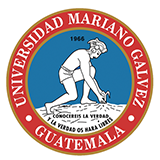
Mariano Galvez University of Guatemala
-
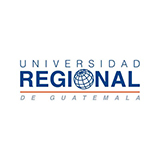
Regional University of Guatemala
-
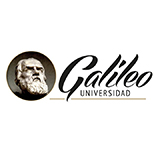
Galileo University
-
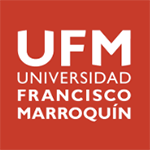
Francisco Marroquín University
-

Rafael Landívar University
-
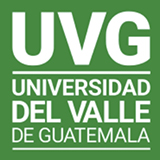
University of the Valley of Guatemala
-
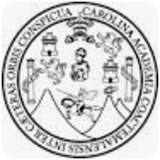
University of San Carlos of Guatemala
-

Technological Institute of Tlaxcala Plateau
-

Golfo University
-
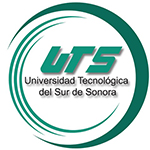
Technological University of South Sonora
-
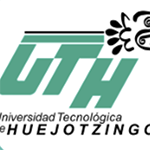
Technological University of Huejotzingo
-

Tizimín Institute of Technology
-

Chilpancingo Institute of Technology

